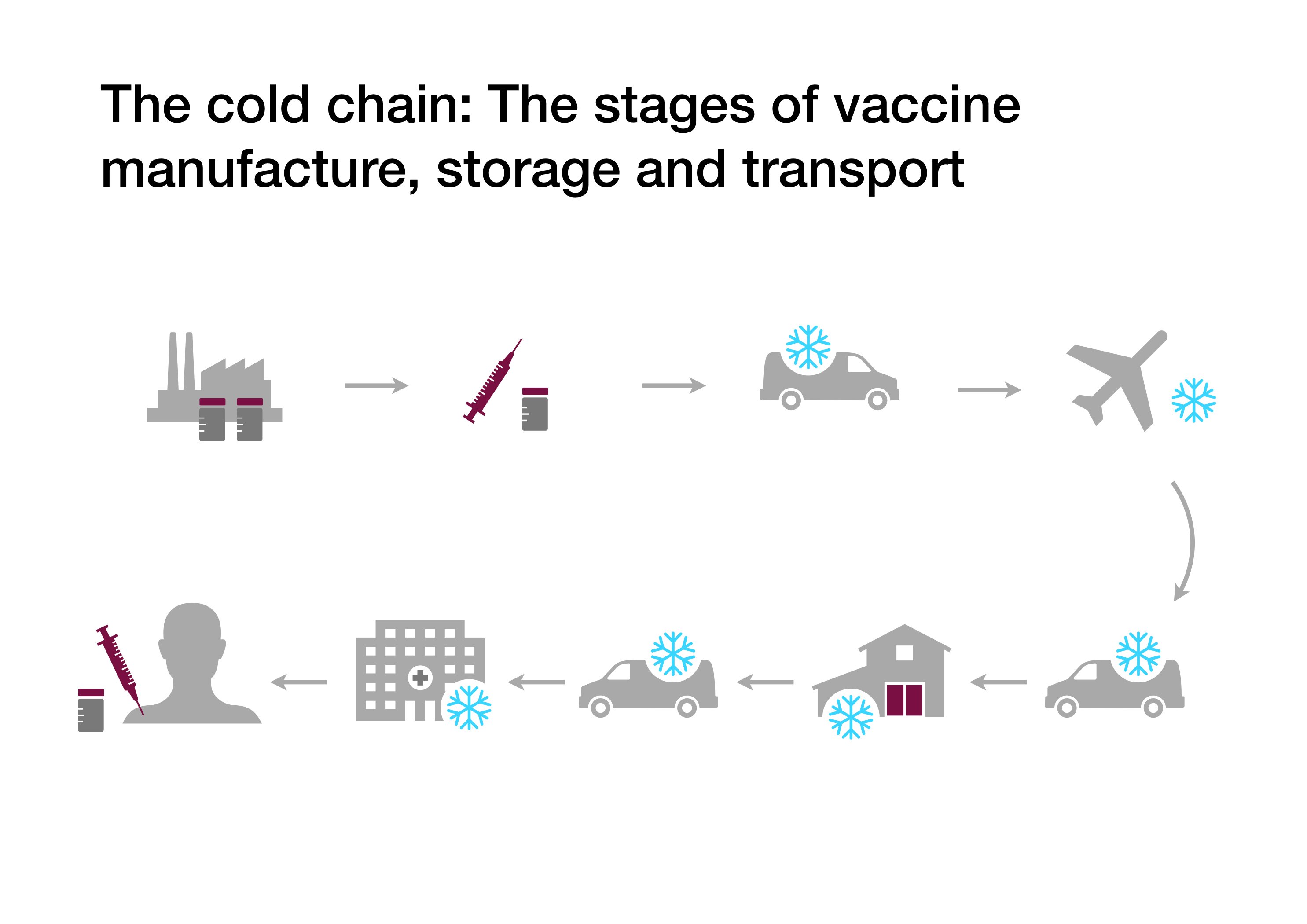Omnia Health: Optimising the COVID-19 vaccine supply chain
Logistics operators need to know where the vaccines are at any point of time.
The emergence of COVID-19 vaccines has given hope, but healthcare systems around the world are now faced with the complex task of securing and distributing supplies to the population. Several factors need to be kept in mind such as the fact that cold chain technology is essential in vaccine distribution. Moreover, in order to make vaccines accessible worldwide, collaboration is important. For example, if you are a logistics provider without the right technology, being willing to partner with other companies is necessary to deliver, stressed Katherina Olivia Lacey, Quincus Chief Product Officer and Co-founder.
In an interview with Omnia Health Magazine, Lacey highlighted some of the potential challenges that transporting vaccines present. She said: “Vaccines are sensitive to external conditions—their transportation requires a lot of care and monitoring.
“A small temperature hike, even for a short time, can reduce the effectiveness of the vaccines. Hence, there needs to be a lot of visibility in terms of transportation conditions.”
She added that additionally, vaccines are time-sensitive and essential to controlling the pandemic. In terms of logistics, this means visibility in terms of location (i.e., tracking).
“We need to know how many vaccines there are and where they are,” emphasised Lacey. “Especially given the scale and magnitude of vaccine distributions, this can be a challenge as it requires a lot of coordination and communication between many vendors and intermediaries.”
Role of supply chain technology
To understand the role of technology in the vaccine supply chain, it is important to look at how the vaccines need to be administered. Most of them require a second shot after a specific amount of time. This makes them time-sensitive.
This, on top of the temperature sensitivity of the vaccines (once opened, it can only be stored for a certain period of time under cold conditions), put a lot of pressure on the supply chain to meet tight delivery deadlines—vaccines cannot afford to be delayed and have to be transported under controlled conditions.
Lacey explained: “Under this context, technology has a large role to play in creating transparency in the process. Logistics operators need to know where the vaccines are at any point of time. If there are delays, why and under what conditions are the vaccines in? Many solutions offer real-time data and communication to facilitate this.
“Additionally, the logistics for vaccines are already insufficient to meet demands. For this, route optimisation has a large part to play in making sure that resources spent for each delivery are minimised to invest more resource making more deliveries—this is to ensure that vaccines are accessible for more people.”

When asked about what attributes of the supply chain and logistics operations need to be closely monitored to ensure timely delivery of the vaccine, Lacey said it has to be end-to-end visibility.
“The time and temperature sensitivity of the vaccines demand that they are carefully monitored throughout the supply chain and not only in the last part of the journey. From packaging to storage, delivery providers need to know the conditions, locations, and more—all in real-time,” she said.
Moreover, it has become crucial for supply chain managers to focus on end-to-end visibility for seamless integration of temperature sensors into one platform, from start to finish point. Furthermore, this platform needs to have the capabilities to alert or indicate any temperature breaches.
Managers also need to ensure that the locations of the vaccines are clearly communicated to them on this platform—even with many intermediaries and logistics providers at hubs (e.g., ports, and airports). Apart from ensuring that the vaccines are on the right routes, this also ensures accountability amongst operators to prevent possible theft.

Katherina Olivia Lacey
Quincus offers Enterprise SaaS solutions for logistics. The company focuses on empowering the supply chain ecosystem by providing machine learning-driven optimisation as well as cross-modal and multi-mile visibility—all in real-time.
She concluded: “Over the pandemic, Quincus has been helping companies innovate. We have been partnering up with logistics providers in increasing visibility in their processes to make vaccines more accessible to remote areas. We also helped companies remain competitive as they branch out into new fields through route and fleet optimisations.”
Subscribe to keep up with our latest news








